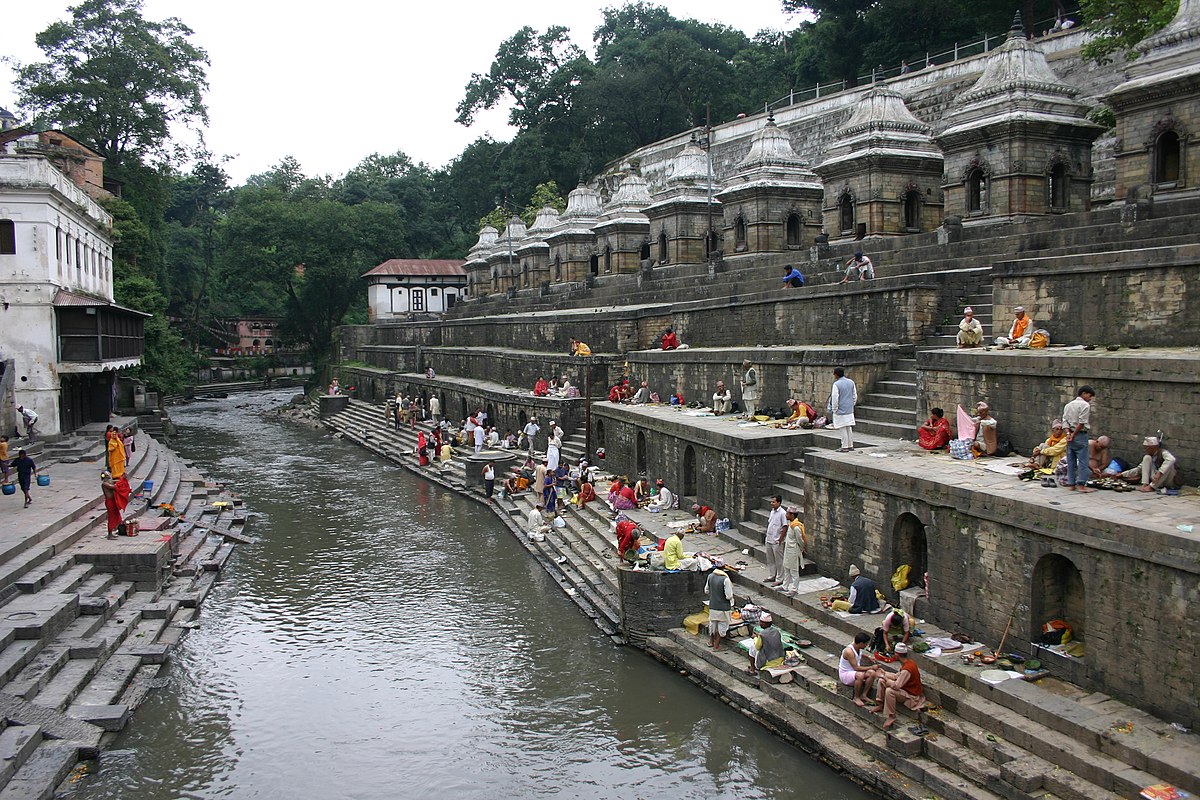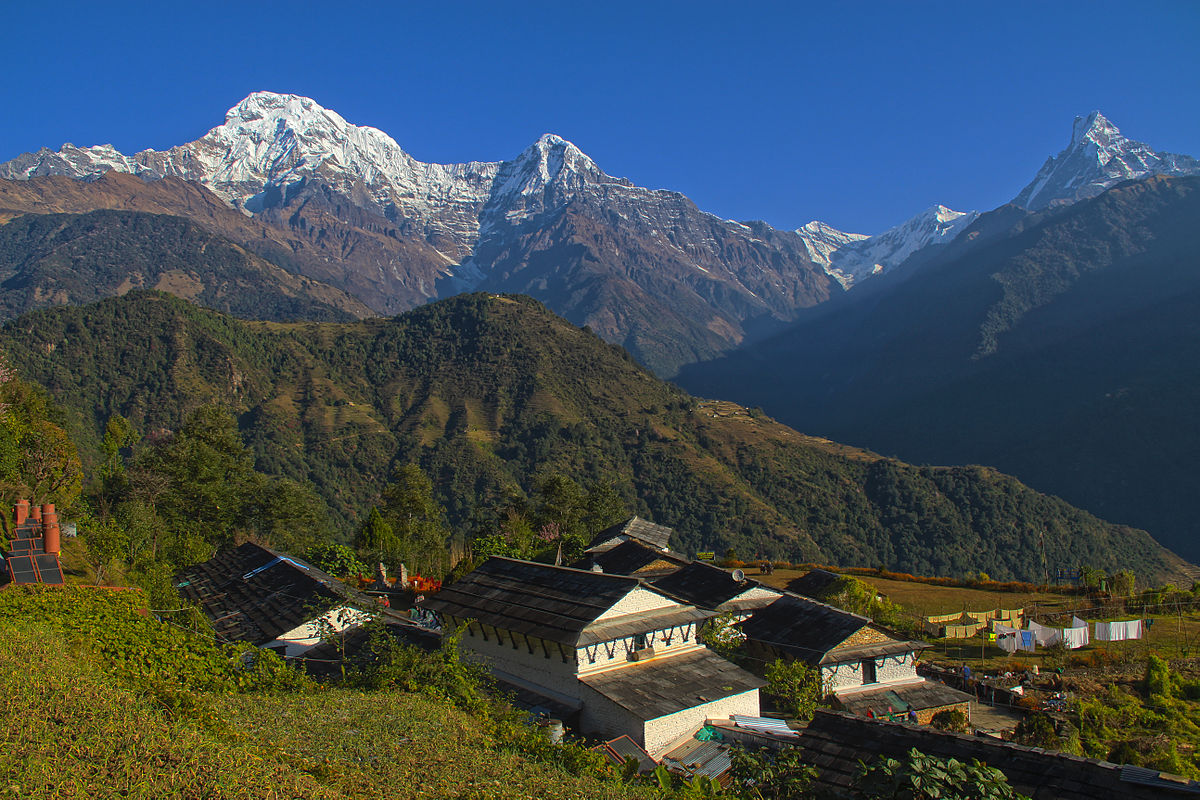खोइ दलितमुखी नेपाली माक्र्सवाद ?
कम्युनिस्ट पार्टीका ‘ब्राह्मणवादी माक्र्सवादी’ नेताहरूले वर्ग र वर्ण/जातबीचको अन्तरसम्बन्ध र अन्तरद्वन्द्वबारे माक्र्सवादी विश्लेषण गर्नु नै जरुरी ठानेनन् ।
काठमाडौँ — नेपालमा अनेक खालका वर्गमध्ये एउटा वर्गीय श्रेणी पनि छ । त्यो श्रेणी हो : आश्वासन दिने–लिनेहरूको वर्ग । एकथरी आश्वासन बाँड्ने वर्ग, अर्काेथरी आश्वासन थाप्ने वर्ग । दलित मुक्तिको आश्वासन बाँड्ने र त्यसलाई थाप्ने मामिलामा यस्तो वर्ग र वर्ग–बोध व्यापक रूपमा देख्न पाइन्छ । आश्वासन बाँड्नेमा गैरदलित वा विष्ट–बराजुको वर्ग/वर्ण रहेको छ ।

आश्वासन थाप्नेमा हाल ‘राजनीतिक बालीघरे’ भएका त्यस्ता दलित रहेका छन्, जो लामो समयसम्म बालीघरे प्रथामा बाँधिएका श्रमजीवी हुन् । अछूत ठानिने ती श्रमजीवीहरूमा पहाडको हिन्दु समाज, नेवार समुदाय वा मधेसी समुदायका दलित पर्छन् । ती दलितसामु बाँडिएका अनेक आश्वासनमध्ये सबैभन्दा प्रखर रहेको छ,आफ्नो शासन वा तन्त्रमा मात्रै नेपाली समाजको सबैभन्दा पिँधमा पारिएका दलित समुदायको मुक्ति हुने आड–भरोसा । यसरी आश्वस्त पार्दै आफ्नो वर्गीय र वर्णीय सत्ता–शक्ति सुरक्षित र सुदृढ तुल्याउने ‘न्यारेटिभ गेम’ निकै प्रभावशाली हुँदै आएको छ ।
आश्वासनमा रुमल्लिएको मुक्ति
कुनै बेला दलितहरूलाई विश्वास गराइयो : प्रजातन्त्र आएपछि अछूत र मासिन्या समुदायको मुक्ति हुनेछ । पञ्चायती प्रजातन्त्र स्थापना भएपछि छुवाछूत र भेदभाव अन्त्य हुनेछ । बहुदलीय व्यवस्थाको पुन:स्थापनासँगै पत्यार दिलाइयो : संसदीय प्रजातन्त्रले दलित समुदायले भोग्दै आएका अन्याय, उत्पीडन र विभेद समाप्त पारिनेछ । अनेक उकाली–ओरालीले भरिएको संसदीय प्रजातन्त्रको यात्रापछि लोकतान्त्रिक गणतन्त्र स्थापित भइसकेको छ । र लोकतान्त्रिक गणतन्त्रले बाँडेको दलित मुक्तिको सपनाको बेहाल पनि असमावेशी निर्वाचन परिणामदेखि दलितको नाममा मारिने सिलसिलामा समेत देखिसकेको छ । त्यसैले होला, लोकतान्त्रिक गणतन्त्र पनि पुँजीवादी शासन नै भएकोले समाजवादी शासनमा मात्रै दलितको मुक्ति सम्भव रहेको नयाँ आश्वासन वितरण गर्न थालिएको छ ।
लोकतान्त्रिक गणतन्त्रमा जनप्रतिनिधि हुनपाएका र नपाएका दलित सांसदहरू सहभागी रहेको ‘दलित संसद’मा पनि साहित्यकार, दलित अगुवा तथा माओवादी केन्द्रका विद्रोही नेता आहुतिले अब माक्र्सवादी आन्दोलनले स्थापना गर्ने वैज्ञानिक समाजवादले मात्रै दलित मुक्तिको सुनिश्चितता गर्ने मत सार्वजनिक गरेका छन् । पुँजीवादले अछूत श्रमिकलाई मजदुर वा सेवकमात्रै बनाउने भएकाले दलितलाई मुक्ति नदिने जनाउँदै आहुतिले सबैभन्दा पिँधमा पारिएका श्रमिक दलितलाई मालिक सर्वहारा बनाउने खालको वैज्ञानिक समाजवादका लागि ‘खाँट्टी माक्र्सवादी आन्दोलन’मा जोड दिएका हुन् ।
प्रश्नको घेरामा माक्र्सवादी
वर्ण/जातको समस्या नभएका देशका माक्र्सवादी विचार र समाजवादी अभ्यासले दलित समस्याको समाधान नदिने तथ्य जगजाहेर छ । त्यसैले वर्ण/जातको समस्या पनि भएका नेपाल लगायत भारतका माक्र्सवादीहरूको काँधमा विचार र व्यवस्थाको तहमा दलित समस्याको हल खोज्ने गहन दायित्व छ । वर्ग र वर्ण लगायत अन्य सामाजिक पहिचानसँग जोडिएका शोषण, उत्पीडन र विभेदको सम्बोधन गर्ने खालका विचार र व्यवस्था निर्माण गर्ने जिम्मेवारी पूरा गर्न सकियो भनेमात्रै माक्र्सवाद सार्थक वैचारिक अस्त्र हुनसक्छ । देश–काल अनुसारको माक्र्सवादको विकास र परिमार्जन गर्न सकिएन भने अन्य विचार र मतजस्तै माक्र्सवाद पनि मतान्धताकै रूपमा रहने माओको चेतावनी हेक्का राख्नलायक छ ।
राजनीतिक व्यवस्थाका रूपमा समाजवादले र दार्शनिक–सैद्धान्तिक विचारका रूपमा माक्र्सवादले दलित समुदायसँग जोडिएका विशिष्ट सामाजिक समस्यालाई कसरी सम्बोधन गर्न सक्छन्, यो नेपाली समाजको रूपान्तरणसँग गाँसिएको मूल प्रश्न हो । मानिसलाई मेसिन बनाउने पुँजीवादी व्यवस्था र विचारले भन्दा भिन्न रूपमा समाजवाद र माक्र्सवादले दलित समुदायलाई सबैभन्दा पिँधको शोषित–पीडित वर्गको रूपमा स्वीकार्छन् कि भोट बैंकका रूपमा रहने भ्रातृ संगठनको जनाधारको रूपमा मात्रै सीमित गर्छन् ? उनीहरूमाथि थोपरेका शुद्ध/अशुद्ध, पवित्र/अपवित्र, उँच/नीचको अमानवीय प्रावधानलाई वैज्ञानिक समाजवाद र माक्र्सवादले कसरी तोड्छन् ? जात, शरीर र खानपानमा अभ्यास गरिने विभेद, उत्पीडन र हिंसालाई कसरी समाप्त पार्छन् ? वर्ण/जातका आधारमा स्रोत, शक्ति, सेवा र सम्मानमा कायम रहेको असमान वितरणलाई कसरी सम्बोधन गर्छन् ? यस्ता प्रश्नबाट भागेर वा बेवास्ता गरेर अहिलेको वैश्विक विश्व समय–सन्दर्भ र नेपालको विशिष्ट सामाजिक जटिलताबीच माक्र्सवाद लागू हुँदैन ।
यस्तैसँग गाँसिएका अन्य सवाल हुन् :
आफ्नो नश्ल, वर्ण/रंग/जातलाई मात्रै सभ्य, शुद्ध, सुसंस्कृत, शिक्षित, पवित्र, उच्च ठान्ने शास्त्र र शस्त्र बोकेका वर्ण/जातको अहंकारी मानसिकता र प्रवृत्तिलाई लोकतान्त्रिक र मानवीय बनाउने कसरी ? संविधान, सरकार, दल, अदालत, मिडिया, शिक्षा लगायतका ‘सुपर स्ट्रक्चर’ (माथिल्लो संरचना) मा रहेको तिनको प्रभुत्व र त्यही प्रभुत्वको आधारमा निर्माण भइरहेको वर्चस्व तोडिन्छन्, कसरी ? नयाँ जनवादी र समाजवादी भनिएका देशको राज्य, सरकार र पार्टीमा कायम एकल जातीय प्रभुत्व, त्यसमा पनि उदीयमान ‘नयाँ वर्ग’ (नियो–क्लास) को एकाधिकार, उनीहरूकै हित र स्वार्थ अनुकूल माक्र्सवादको अपव्याख्यासँगै दमनकारी राज्य सञ्चालनको इतिहासलाई अब मोडिन्छ, कसरी ? यहाँका लागि माक्र्सवादको विकास र परिमार्जन गर्न चाहने व्यक्ति र शक्तिहरूसामु रहेका नेपाली समाजका राजनीतिक–आर्थिक–सांस्कृतिक प्रश्न हुन् यी ।
‘ब्राह्मणवादी माक्र्सवादी’
नेपाली समाजमा माक्र्सवादलाई सही र वैज्ञानिक सिद्ध गर्न यस्तो चिन्तन र कर्म गर्नुपरेको कदापि होइन, किनभने कोही पनि माक्र्स र माक्र्सवादका लागि बाँचेका होइनन् । बरु आफ्नो जीवन र जगतलाई फेर्न अरू वाद र विचारभन्दा माक्र्सवाद बढी उपयोगी भए–नभएको हेर्ने क्रममा यस्ता प्रश्न उठाइएका हुन् । एउटा कुरामा सत्यता के छ भने कार्लमाक्र्स आफैले वर्ण/जात व्यवस्थाबारे त्यति विशद रूपमा लेखेका छैनन्, जति पुँजीवादबारे लेखे । उनले सन् १८४५–४६ मा ‘जर्मन आइडियोलोजी’ र ‘पुँजी’को खण्ड १ मा ६/७ ठाउँमा जात व्यवस्थाबारे टिप्पणी गरेका छन्, जसले यस सम्बन्धमा बुझ्न केही अन्तरदृष्टि दिन सक्छन् । त्यसैले एक अनुमान गर्ने गरिन्छ, माक्र्स भारतमा जन्मिएका भए ‘क्लास’ (वर्ग) बारे होइन, ‘कास्ट’ (जात) बारे लेख्थे वा क्लास र कास्टको सम्बन्धबारे चिरफार गर्थे । त्यस्तै अर्काे अनुमान पनि गर्न सकिन्छ, उनले पनि धर्ममा सुधार वा सुदृढीकरणका लागि दयानन्द सरस्वतीले जस्तै आर्य समाज खोल्न सक्थे वा ज्योतिराव फुलेले जस्तै दलितमुखी सामाजिक सुधार पनि गर्न सक्थे वा उनका समकालीन भानुभक्त आचार्यले जस्तै ‘रामायण’को अनुवाद गर्न पनि सक्थे ।
यस अर्थमा भारत र नेपालका माक्र्सवादीहरूले वर्गलाई ध्यान दिने नाममा वर्ण र जात व्यवस्थाको अन्तरसम्बन्धलाई बेवास्ता गर्दै आफ्नै वर्ण/जातको पूर्वाग्रह प्रकट गरेको तथ्य बिर्सन सकिँदैन । वर्ण व्यवस्थामा आधारित सत्ता–शक्ति–सम्पत्ति–शिक्षामाथि एकाधिकार कायम गर्ने र त्यसकै आधारमा दीर्घकालसम्म वर्चस्व निर्माण गर्ने क्रममा शूद्र/अछूत वर्णको नाममा वर्गलाई स्थिर पारिएको यथार्थलाई बेवास्ता गर्न मिल्दैन । त्यही यथार्थलाई बेवास्ता गरेका कम्युनिस्ट पार्टीका ‘ब्राह्मणवादी माक्र्सवादी’ नेताहरूले वर्ग र वर्ण/जात बीचको अन्तरसम्बन्ध र अन्तरद्वन्द्वबारे माक्र्सवादी विश्लेषण गर्नु नै जरुरी ठानेनन्, त्यस विरुद्ध संघर्षको सुविचारित रणनीति र कार्यनीति बनाउने त कुरै भएन । भारतमा दलित मुद्दालाई कम आँक्ने वाम आन्दोलन र दलित आन्दोलन अलग–अलग दिशातिर बढेकै कारण राजनीतिक त्रासदी देखिएको प्रा.सुमित सरकार र सुभाष गाताडेको मत छ । आनन्द तेलतुमडे भन्छन्, ‘संसारमा कतैपनि सर्वहाराहरूको आन्दोलन यति निराशाजनक ढंगले बाँडिएको देखिँदैन, जति भारतमा देखिन्छ ।’
नेपालका माक्र्सवादीहरूले भने दलित र उत्पीडितका नाममा संगठन, भ्रातृ संगठन खोल्ने, कसैले बृहत रूपमा दलित पहिचानका आधारमा गोलबद्ध गर्ने, मन्दिर प्रवेशजस्ता सुधारवादी संघर्षका लागि छुट दिने हदसम्म काम गरे, तर आफूले ल्याउने भनेको व्यवस्थामा वर्ण/जात व्यवस्था उन्मूलन गर्ने प्रक्रिया र दिशानिर्देश गर्ने मामिलामा टाउको दुखाउनु आवश्यक ठानेनन् । यो कुनै विचारधारात्मक कमजोरी मात्रै कदापि होइन, सांस्कृतिक–राजनीतिक–आर्थिक सत्ताको फेरबदल र हस्तान्तरणसँग पनि जोडिएको ‘कन्फ्लिक्ट अफ इन्टेरेस्ट’ (स्वार्थको द्वन्द्व) को द्योतक पनि हो । असमावेशी र अन्यायपूर्ण राज्य कायम रहने पुँजीवादी लोकतन्त्रलाई थोरै लोकतान्त्रीकण गर्ने क्रममा अँगालिएको आरक्षण र समानुपातिक समावेशीको सुधारवादी प्रावधानलाई समेत निहित स्वार्थका लागि अपहरण गर्ने सवर्ण राजनीतिक नेतृत्वको एकाधिकारलाई फेर्ने र श्रमजीवीहरूको नेतृत्व स्थापित गर्ने कुनै संरचना, प्रक्रिया र विधि–विधानबारे सोचिएको समेत छैन । आफ्ना वर्ग/वर्ण/जात/लिंग र क्षेत्रका निहित हित र स्वार्थ छाडेर उनीहरूले आफूलाई लोकतान्त्रीकण र मानवीयकरण गर्ने संरचना, विधि र संस्कृतिबारे पनि विकल्प बनाउने विषयमा त चिन्तासमेत लिएको छैन ।
सवर्ण पुरुष नेतृत्व हावी रहेका एमाले र माओवादी केन्द्रको बहुमतीय सरकार निर्माण र पार्टी एकताको महायज्ञ चलिरहेको बेला यस्ता विषय आफूलाई वामपन्थी, लोकतान्त्रिक र माक्र्सवादी ठान्नेहरूका चासो, र चिन्तनका मुद्दा कहिले बन्ने होलान्, थाहा छैन ।
source Kantipur














